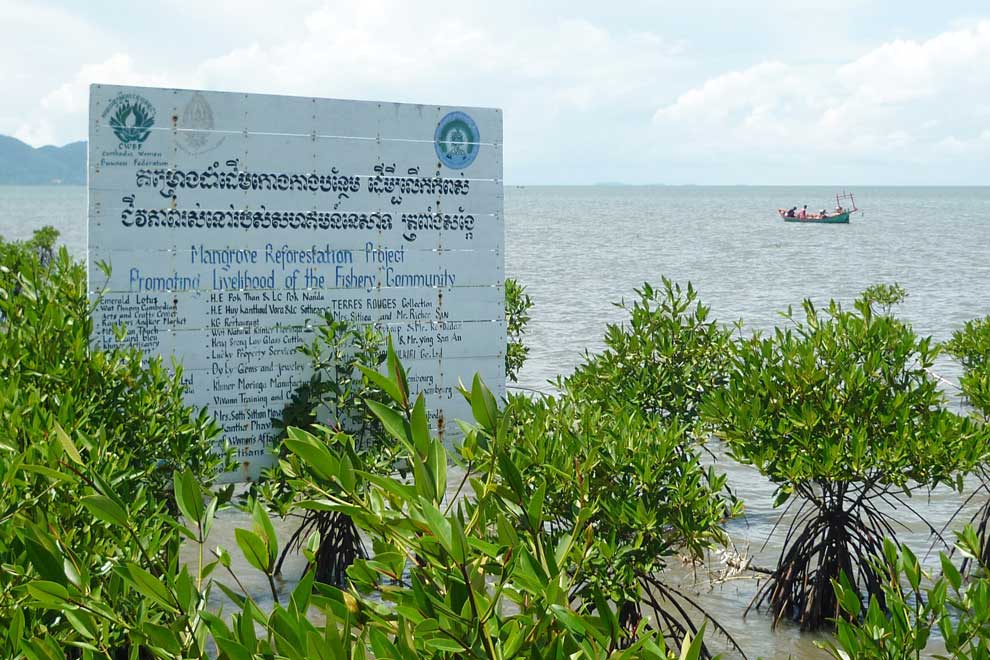
Mangrove forest areas in Kampot province’s Teuk Chhou district. Facebook
An inter-ministerial committee and the Kampot provincial technical administrative committee have agreed to implement a one-month plan from March 1-31 to assess and update the number of trees remaining in mangrove forests in the province.
However, a civil society organisation official said the move was too slow because some mangrove areas have already been lost.
Kampot provincial administration director Veth Vathana said on March 2 that the inter-ministerial committee made up of the Ministry of Agriculture, Forestry and Fisheries and the provincial technical administrative committee have decided to reorganise a working group that will assess mangrove forests across the province.
After the working group finishes the works, it will take up the matter with the provincial technical administrative committee and the inter-ministerial committee for them to prepare a map to plant boundary posts and ask for a state ownership list.
“After forests are confirmed as state-owned, if there is an encroachment then the law will be enforced,” he said.
However, he added that the verification and update of forests was not a new task – the task had already been attempted before. But it had been met with delays due to Covid-19 pandemic and had been unsuccessful. The ministry reminded the group to continue the task.
In the past, companies had invested in coastal areas, so development had affected some mangrove forests. But the companies had received permission from the Council for the Development of Cambodia.
Citing old figures, Kampot provincial Department of Agriculture, Forestry and Fisheries director Chan Rith said there were 1,966ha of mangrove forests in the province. But because of the encroachment and illegal logging the forests have decreased in size. So, the ministry and provincial-level working groups have revised components to go and verify and update the forests again.
“We have set up the committee again because some of its members have left and others were replaced. We will hold a meeting to go and inspect the forests accordingly between the provincial and national committees. After the meeting, we will have a clear approach to the task,” he said.
Chan Rith added that when the land has been measured and an update agreed to then boundary posts would be planted and clearly listed so the forests can be managed more efficiently.
Yun Phally, provincial coordinator for rights group Adhoc, said that setting up the committee for the verification and update of the mangrove forest had been too slow because some mangrove forest areas have already been lost.
He explained that the loss of forests was because soil was used to fill some beaches for development. The mangrove forests grow in shallow coastal areas and when the beaches were filled in, many mangrove trees were destroyed, but some had been managed, protected and preserved by communities.
“In managing the mangrove forests effectively, I think that the current forests are taken care of by communities and the forests should be managed and taken care of by communities. We also have to grow more crops on shallow coastal areas. When we protect this forest, it provides shelter for a variety of fish. The cultivation of fishery resources is increasing,” Phally said.









